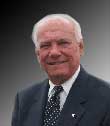 We are having a problem with filling our firefighter and law enforcement officer positions on LEOFF I Disability Boards and Prior Act Pension Boards. Some of the existing members under the jurisdiction of these boards live out of the area, in other cities, towns and states, or due to age or health, are not able to serve. What is the solution?
We are having a problem with filling our firefighter and law enforcement officer positions on LEOFF I Disability Boards and Prior Act Pension Boards. Some of the existing members under the jurisdiction of these boards live out of the area, in other cities, towns and states, or due to age or health, are not able to serve. What is the solution?
A few years ago we passed a bill in Olympia amending RCW 41.26, the LEOFF statute to allow two firefighters to serve on a LEOFF I Disability Board where there are no law enforcement officers under the jurisdiction of the board and two law enforcement officers where there are no firefighters under the jurisdiction of the board. The amendment also allowed LEOFF II members employed by an employer in the jurisdiction of the board to serve on the board if elected by the members under the jurisdiction of the board. RCW 41.18 and RCW 41.20 the Prior Act statutes were not amended. The two firefighters or two law enforcement officers must be under the jurisdiction of the Pension Board to be eligible for election to the board. There has been some discussion to try to pass a bill amending all statutes to allow full-time employed firefighters or law enforcement officers to serve on any board in any jurisdiction. I don’t feel that the RFFOW should make that decision on our own. We should have input from the entire 7,300 LEOFF I members or their elected representatives. How do we get this input without one statewide police and fire organization?
The nineteen bills we have gotten introduced and passed amending the retirement statutes have been under the direction of the members of the Retired Firefighters of Washington (RFFOW). Fortunately no group or organization opposed our efforts except when the Coalition opposed the bill that allowed those who married after retirement to select a Survivor Option for their current spouses.
The current interest rate of return on pension fund investments used by the Pension Funding Council to set the contribution rates is 7.7 %. The LEOFF II Retirement Board was not as optimistic as the Pension Funding Council and used a return rate of 7.5%. In the private sector actuaries were projecting return rates as low as 5.5% and 3.5%. Using a higher rate of return reduces the contribution rates and the amount the state budgets for retirement contributions. A higher projected rate of return increases the fund value, reduces any unfunded liability and
increases the projected LEOFF I surplus. If the actual rate of return is less than the projected rate, pension fund values are reduced, any unfunded liabilities are increased and the projected LEOFF I surplus is reduced. The State Actuary recently announced that he will be recommending a return rate of 7.4% to the Select Committee on Pension Policy (SCPP) and the Pension Funding Council.
Theresa Whitmarsh, the Executive Director of the Washington State Investment Board (WSIB) when testifying at a SCPP meeting this summer during the TRS/LEOFF I merger study gave a report where she made a very interesting remark. She stated that the long term earned interest rate for the retirement trust fund may be about 6.1%. The projected rate of return today is 7.7%.
Matt Smith, the State Actuary presented an analysis of the impact to the LEOFF I surplus if the earned interest was below 7.7% as projected.
- A return rate of 7.7% would put the funded rate at 125%.
- A return of 7.5% would put the funded rate at 123%.
- A return of 5% would put the funded rate at 97%.
- The loss would apply equally to the TRS I fund with or without the LEOFF merger.
The state legislature created Washington State Investment Board (WSIB) in 1981 as an independent board of trustees to manage investments for the state’s various retirement plans and public trust funds with the highest standard of professional conduct for the exclusive benefit of fund participants and beneficiaries.
Follow us on Facebook